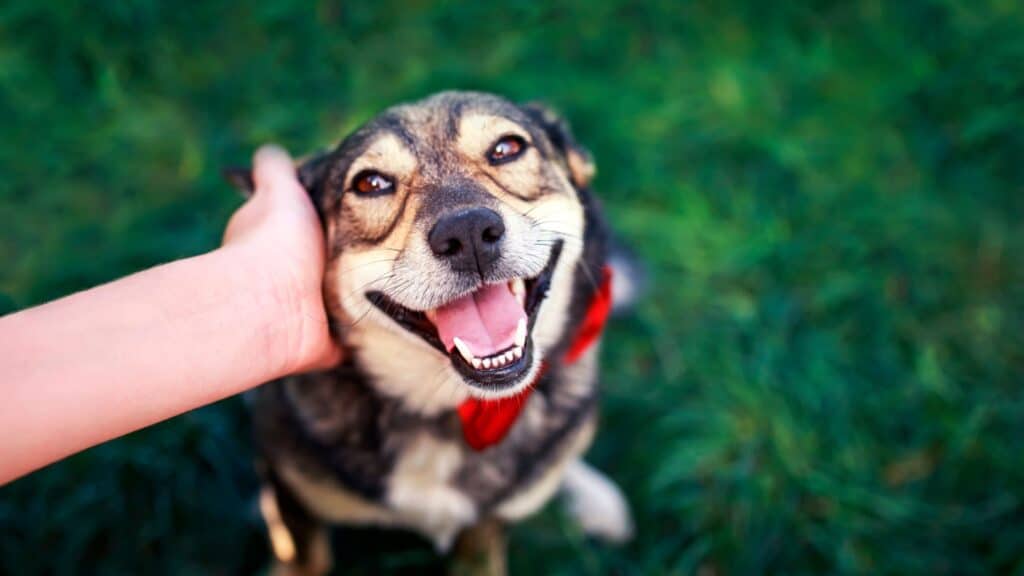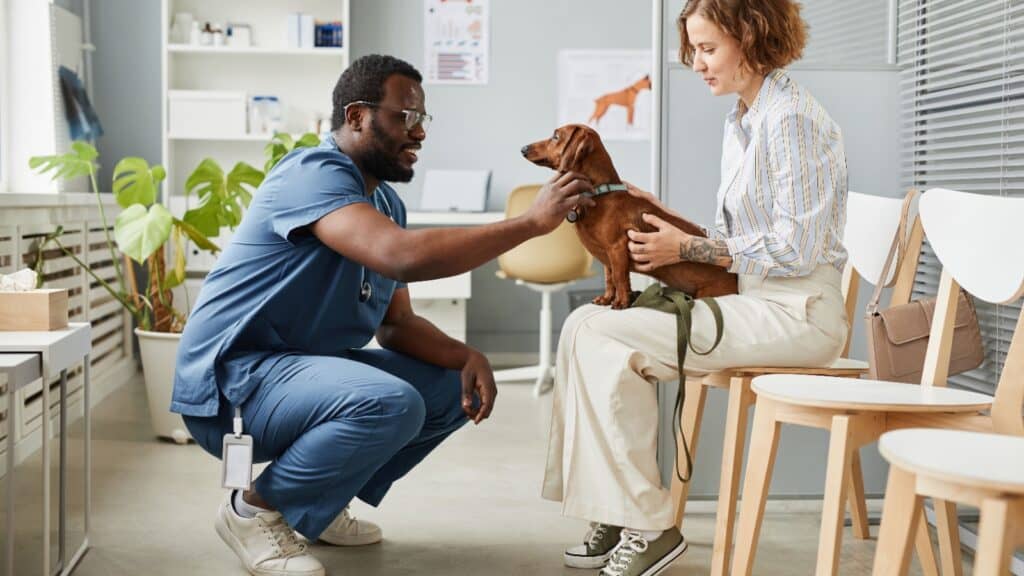Microchipping: The Lifesaving Tool Every Dog Owner Should Use—But Beware of These Risks!
Microchipping your dog is a critical step in responsible pet ownership, offering a reliable method for reuniting lost pets with their owners. Unlike collars and tags, which can easily be lost or removed, microchips provide a permanent form of identification that stays with your pet for life. A reputable breeder and shelter will have their dogs microchipped before they place them in homes and will provide you with the details.
However, while microchipping offers many benefits, there are also challenges, including the potential for microchip migration and the issues associated with varying registry systems across different regions. This article explores the importance of microchipping, discuss the challenges associated with microchips, and compares the effectiveness of microchip registry systems in Europe versus the United States.
What Is Microchipping?

A microchip is a small device, about the size of a grain of rice. Microchips are implanted just under the skin, usually right between the dog’s shoulder blades. It gives your pet their own unique code. The microchip can be scanned and matched to the owner’s contact details.
Who Microchips Dogs?

As Maryanne Mack DVM, of the Feeding Hills Veterinary Clinic in Massachusetts explains, “Microchipping is typically done by reputable breeders prior to a dog leaving for its new home. This provides a safety net which can ensure that those dogs do not end up in the shelter system.”
In addition, if a dog comes into a reputable shelter or rescue without a microchip, the dog will be microchipped before being placed.
When & Why Are Dogs Microchipped?

Mack continues, “Ideally, the microchip is registered to the new owner prior to leaving the breeder’s home, and the breeder is listed as a backup contact. One challenge comes in the lack of centralized databasing for microchips,” which we address later in this article.
Responsible breeders add their name to the microchip registry because they take responsibility for the dog for its entire life. Conversely, a disreputable breeder does not want that responsibility. They want to sell the dog and be hands off.
When adopting a dog from a shelter or rescue, you will be given paperwork detailing your next steps to update your information in the database to ensure the dog is returned to you if lost and found.
Does Microchipping Hurt The Dog?

Placing a microchip is done with a large-bore needle and doesn’t require anesthesia. It is similar to a vaccination.
Why Microchipping Your Dog is Essential

- Permanent Identification: Unlike other forms of identification, microchips are implanted under the skin and cannot be easily removed. This ensures that even if your dog loses its collar or tags, it can still be identified.
- Increased Likelihood of Reunification: Statistics show that dogs with microchips are significantly more likely to be reunited with their owners if they become lost. According to studies, dogs with microchips are returned to their owners 20 times more often than dogs without.
- Global Standards: Many countries have adopted ISO-standard microchips, which can be read by scanners worldwide. (This is not true in the U.S.; see more below in article). This is particularly important for dogs that travel internationally, ensuring they can be identified and returned to their owners no matter where they are found.
Safekeeping Microchip Information

Purpose-bred breeders will most likely have already microchipped their puppies before placing them in homes; paperwork will be provided. Studies have shown that only about 18% of stray pets ending up in shelters are microchipped; shelters will microchip pets before they place them, so paperwork should come from them, too.
Store your microchip paperwork in a safe place (with rabies and other medical information) and if your dog should become lost, you will have access to the microchip number to share or refer to. Make sure you update your contact information every time you move or change your phone number.
You can also ask a veterinarian at a visit to scan your dog’s chip, so that you can document the number, if you didn’t have it before.
Challenges of Microchipping

While microchipping is a highly effective tool for identifying pets, it is not without its challenges. Mack explains, “Each manufacturer provides their own registration system, and it often takes multiple steps to determine who owns the dog. For an already taxed shelter, ACO (animal control officer), or rescue, these extra steps can be complicated and lead to dogs whose chips are unregistered being lost to the system. A centralized database that allowed for easy access to chip information would aid in simplifying this process.”
Microchip Issues At A Glance

- Incorrect Information: If a dog changes ownership, or if your address and contact information changes, the chip must be updated.
- Microchip Migration: One of the main issues with microchips is the potential for migration. Over time, a microchip can move from its original implantation site, typically between the shoulder blades, to other parts of the body. This can make it more difficult for a scanner to detect the microchip, especially if it has migrated to an unusual location.
- Microchip Failure: Although rare, microchips can fail. This could be due to a manufacturing defect, physical damage, or other factors. A failed microchip may not be detected by scanners, rendering it useless for identification purposes.
- Inconsistent Registry Systems: In the United States, there is no centralized microchip registry. This means that when a lost dog is found, the microchip’s information may not be accessible if the scanner used does not have access to the correct registry database. This can lead to situations where a microchipped dog is unable to be identified, despite having a functioning microchip.
- Limited Scanner Access: Some shelters and clinics might have limited access to scanners that can read all frequencies, especially in more rural areas. In these cases, the ability to identify your dog might depend on the resources available at the specific location where your dog is found.
Why Are Microchip Registry Systems Different?

One of the major differences between microchipping in Europe and the United States is the organization of registry systems:
- European Registry System: Many European countries have centralized or interconnected microchip registries. This means that a single database or a network of databases is used to store and access microchip information. When a microchip is scanned, the information can be quickly and easily retrieved, regardless of where the dog was originally registered. This system increases the likelihood that a lost dog will be reunited with its owner.
- United States Registry System: In contrast, the United States lacks a single, centralized microchip registry. Instead, multiple private companies manage separate databases. When a dog is found and scanned, the scanner may not be able to access the correct database, particularly if the microchip was registered with a different company. This fragmentation can lead to delays in identifying the dog or, in some cases, the inability to identify the dog at all.
Examples of U.S. Microchip Registries

In the United States, there are several microchip registries, with the exact number varying as new registries emerge or existing one’s merge or close. Some of the most prominent registries include:
- HomeAgain
- PetLink
- AKC Reunite
- 24PetWatch
- BuddyID
- Petkey
- Found Animals
- AVID/PETtrac
These registries operate independently, and pet owners must register their pet’s microchip with one or more of these services to ensure the information is available if the pet is lost. Dr. Mack recommends HomeAgain and Petlink.
What Actually Makes Chips Different From One Another?

- ISO Standards: Most countries, including those in Europe, use ISO-standard microchips, which operate at a frequency of 134.2 kHz. The U.S. also recognizes ISO-standard microchips, and many (though not all) scanners used by veterinarians, animal shelters, and rescue organizations in the U.S. can read these chips. If your dog has an ISO-standard microchip, it can generally be read by scanners in the U.S.
- Non-ISO Chips: However, if your dog was microchipped with a non-ISO chip (some older U.S. microchips operate at different frequencies, such as 125 kHz), there could be a problem with compatibility. Some scanners might not be able to detect or read the chip properly, making it more difficult to identify your dog.
Why Doesn’t the U.S. Have a Single Microchip Registry?

The absence of a single, centralized microchip registry in the U.S. is primarily due to a combination of market dynamics, regulatory approaches, and industry fragmentation.
- Market Competition: In the U.S., microchip registries are largely run by private companies. Each company offers its own registry as part of its service, leading to a competitive market where multiple registries coexist. Companies benefit from managing their own databases as it allows them to offer additional services and create brand loyalty.
- Regulatory Environment: The U.S. government has not mandated a single microchip registry, likely due to the decentralized nature of pet ownership regulation and the general preference for market-driven solutions over centralized government intervention. Pet ownership and animal welfare laws are often handled at the state or local level, and there has been no federal initiative to standardize microchip registries.
- Lack of Consensus: There is no consensus among stakeholders—including microchip manufacturers, veterinarians, animal welfare organizations, and pet owners—about the need for or the structure of a single registry. Different companies and organizations have varying interests and priorities, making it difficult to establish a unified system.
- Privacy and Data Concerns: Some concerns also exist around privacy and data management. A single, centralized registry would require stringent data protection and management policies, and there may be concerns about who controls the data and how it is used.
Who Made the Decision?

The decision to not implement a single registry in the U.S. is not the result of a specific government ruling or decision but rather the outcome of a combination of factors including market forces, regulatory philosophy, and industry practices. Without a strong push from the federal government or a coalition of industry stakeholders, the status quo of multiple registries has persisted.
What is the AAHA Pet Microchip Lookup Tool?

The American Animal Hospital Association (AAHA) created the Pet Microchip Lookup Tool, which searches multiple registries. If the ID is registered, the tool displays the logo and telephone number of the participating Pet Recovery Service Provider. It functions as a search engine, not a central registry. The tool does not provide the owner’s information. It requires time and effort on behalf of veterinary and rescue personnel, and they are already overtaxed. The tool does not always help reunite dogs and their owners.
Microchips Can Come Up As “Un-Registered”

Dr. Patty Khuly has written extensively about the issues with microchips in the U.S. She explains, “Just because a pet doesn’t come up as registered in a certain database doesn’t mean she isn’t registered…finders will assume AVID chipped pets will be on AVID’s registry, and HomeAgain on HomeAgain’s. Unfortunately, if you find a pet with a HomeAgain microchip that’s registered on AVID’s database, HomeAgain will tell you it’s not registered. And vice-versa. And neither, as I learned from calling them to check on one particular patient, will refer you to AAHA’s online Microchip Lookup tool. Nice, right?”
Dr. Khuly does not want this to dissuade anyone from microchipping their pet; she just wants us to be aware.
What If My Dog Was Microchipped In Another Country?

Let’s say you live in the U.S., but your dog comes from abroad and was microchipped outside of the U.S.
It’s advisable to re-register your dog’s microchip with a U.S. registry as soon as you bring your dog into the country. Some U.S. registries allow you to register microchips from other countries, ensuring that your dog’s information is accessible if the microchip is scanned in the U.S.
To further safeguard against potential issues, you might consider registering your dog’s microchip with multiple registries, both in the country of origin and in the U.S. This can increase the likelihood that the microchip information will be accessible, no matter which scanner is used.
Microchips Reunite Dogs More Than Any Other Measure

Microchipping is a vital tool for ensuring the safety and security of your dog. Some studies state that a dog is 3 times more likely to find its way home, if it is microchipped. While there are challenges, particularly with microchip migration, failure, and registry system inconsistencies, the benefits far outweigh the risks. By understanding these challenges and taking proactive steps to mitigate them, you can help ensure that your dog will be quickly and safely reunited with you if they ever become lost. As microchipping technology and registry systems continue to improve, the process will likely become even more reliable and effective, offering peace of mind to pet owners worldwide.
Final Thoughts

Mack’s suggestions: “The most important step of the microchip process is to register the microchip and to update contact information whenever it changes. While every chip can be traced back to the person to whom it was sold, the legwork to get to the point is often a challenge. Prompt registration leads to prompt access to information and reunions for lost pets!”
How To Travel With Your Dog: Planes, Trains, Automobiles – and Boats!

Traveling with your dog can be a rewarding experience, but it requires careful planning and consideration to ensure safety and compliance with various regulations. Whether you are traveling by car, plane, train, boat, or subway, understanding the laws, safety measures, and best practices is crucial. We have what you need to know for a smooth and enjoyable journey with your canine companion. And if you have the bucks for private plane travel, we have the details about how you and your pooch can travel together in style.
READ: How To Travel With Your Dog: Planes, Trains, Automobiles – and Boats!
How To Protect Your Dog From Heat Stroke This Summer And What NOT To Do!

Summer is here and it’s essential to prioritize your dog’s safety and well-being by taking proactive steps to prevent overheating. Dogs are more susceptible to heat-related illnesses due to their inability to sweat like humans, making it crucial for pet owners to be aware of the signs, prevention methods, and emergency procedures to ensure their dog stays cool and healthy. In the most serious cases of canine dehydration, severe fluid shortage can lead to the failure of the kidneys and other organs.
In addition, we keep seeing posts, on Facebook in particular, that have incorrect, and even dangerous information. All of the information here is evidence-based. READ: How to Protect Your Dog from Heat Stroke This Summer and What NOT To Do!
How Many Of These Foods Did You Know Could Kill Your Dog?

Our canine companions bring immense joy into our lives, and it’s our duty to ensure their well-being. However, certain everyday foods found in our homes can pose serious risks to their health. Here’s a look at foods that should never be fed to dogs or left within their reach.
To be prepared, have contact details of your local veterinarian, the nearest emergency clinic, and the ASPCA Animal Poison Control Center (888-426-4435) at hand. READ: How Many Of These Foods Did You Know Could Kill Your Dog?
Understanding The Surge In Veterinary Costs: Is It Becoming Too Expensive To Have A Pet?

If you own a pet, we bet you have noticed that veterinary care costs are escalating, leaving many of us with sticker shock and struggling to secure timely appointments. There are reasons for this burgeoning phenomenon; we unveil the many factors steering this surge. Read: Understanding The Surge In Veterinary Costs: Is It Becoming Too Expensive To Have A Pet?
Join Us

Join us on this empowering journey as we explore, celebrate, and elevate “her story.” The Queen Zone is not just a platform; it’s a community where women from all walks of life can come together, share their experiences, and inspire one another. Welcome to a space where the female experience takes center stage. Sign up for our newsletter so you don’t miss a thing, Queen!







